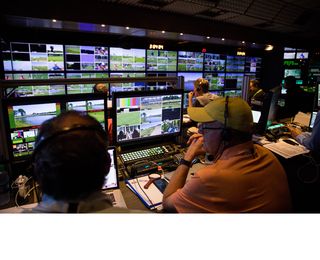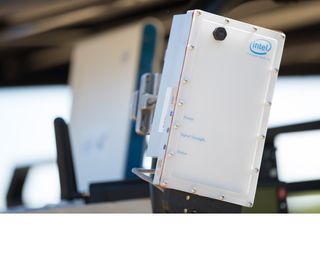Golf's digital ambitions make it an unlikely 5G pioneer
Golf looks to new technologies - including 5G.

For a sport which has a governing body called the ‘Royal & Ancient Golf Club’, golf is proving surprisingly progressive with its use of technology – especially with regards to 5G and broadcasting.
As is the case with so many other sports, golf is competing not only with the likes of football, basketball and other disciplines, but also with other forms of entertainment like Netflix for people’s attention.
And with younger demographics, which might have shorter attention spans and see golf as a more traditional sport, the challenge is that much greater.
Digital priorities
But mobile technology is seen as the answer in not only attracting younger people to the sport, but also to make its broadcasts more dynamic and more efficient.
European Tour CTO Michael Cole, for example, sees his organisation as an entertainment and content company that can appeal to multiple geographies and age groups, especially those that can’t attend an event.
Part of his remit is to transform the European Tour’s systems and infrastructure, and this is why it has signed up with Tata Communications. Each year, the Tour operates 47 events in 30 countries across five continents – a schedule that necessitates the rapid rollout of IT equipment across an entire golf course in a matter of days.
The Tata partnership helps deliver a consistent experience at each venue and will eventually see the creation of proof-of-concepts for Augmented Reality (AR) and Virtual Reality (VR) experiences that will attract new audiences.
Are you a pro? Subscribe to our newsletter
Sign up to the TechRadar Pro newsletter to get all the top news, opinion, features and guidance your business needs to succeed!

5G broadcasting
And this is where 5G could have a role to play. The first 5G networks are expected to go live later this year, delivering gigabit speeds, high capacity and, crucially, ultra-low latency.
The ability for mobile operators to move more functions to the edge of the network will bring them closer to the end user, allowing for the almost real time performance of VR and AR applications, as well as drone cameras. What’s more, the increased bandwidth will be able handle 4K Ultra-High Definition (UHD) feeds.
At present, broadcasting golf events involves the use of wired and wireless infrastructure located around the course. For the 2018 US Open at Shinnecock Hills, US broadcaster Fox Sports deployed 38 miles and 706 strands of fibre cables, 848 Ethernet Ports and 91 distinct managed networks managing 3Gbps of internet data and 73Gbps of broadcast data.
The use of 5G could not only limit the amount of cabling that needs to be strung around the course, making broadcasting more cost efficient, but also power VR and AR experiences that will attract new viewers.

At the same event, Fox Sports used Intel’s 5G Mobile Trial Platform on the seventh hole to transmit a 4K feed. Ericsson network equipment transmitted the 1.6Gbps feed using AT&T’s millimetre Wave (mmWave) spectrum to Fox Sports’ production truck, which then encoded and decoded the stream for broadcast.
“The high-speed and low-latency delivered by this trial allows the cameras to move without being restricted by cables and create a unique filming environment,” added Melissa Arnoldi, president of AT&T Technology Operations. “We believe live sports will be transformed by 5G – whether it’s virtual and augmented realities for those watching from afar or how connected sensors could help analyze golf swings, wind conditions, even the speed of greens for the golfer in future U.S. Opens.”
Another key element of 5G is network slicing, a feature which allows operators to effectively create virtual networks for individual users. In this case, broadcasters would use a separate slice to public safety teams, operations and the general public. Some even believe that entirely private 5G networks will be a possibility, with industrial giants bidding for spectrum, however the most obvious use case for this would be at a plant or factory.
Future advances
“We’ve never worked with technology that is as revolutionary as 5G before — the sky is really the limit on what is possible,” added Fox Sports’ Michael Davies.
The one event in Golf that tends to appeal to more casual fans is the Ryder Cup – a biennial matchplay contest between Europe and the US’s finest golfers.
This year’s tournament takes place at Le National Golf Club in Paris, France, and making sure the public Wi-Fi is up to scratch has been a key consideration for organisers, with Hewlett-Packard Enterprise (HPE) helping create a network that can support up to 51,000 users each day and organisers’ needs.
As sports organisations seek new audiences and growth in an era of unprecedented entertainment choice, the use of mobile technology and connectivity is a tool that cannot be ignored.
Steve McCaskill is TechRadar Pro's resident mobile industry expert, covering all aspects of the UK and global news, from operators to service providers and everything in between. He is a former editor of Silicon UK and journalist with over a decade's experience in the technology industry, writing about technology, in particular, telecoms, mobile and sports tech, sports, video games and media.
Most Popular

